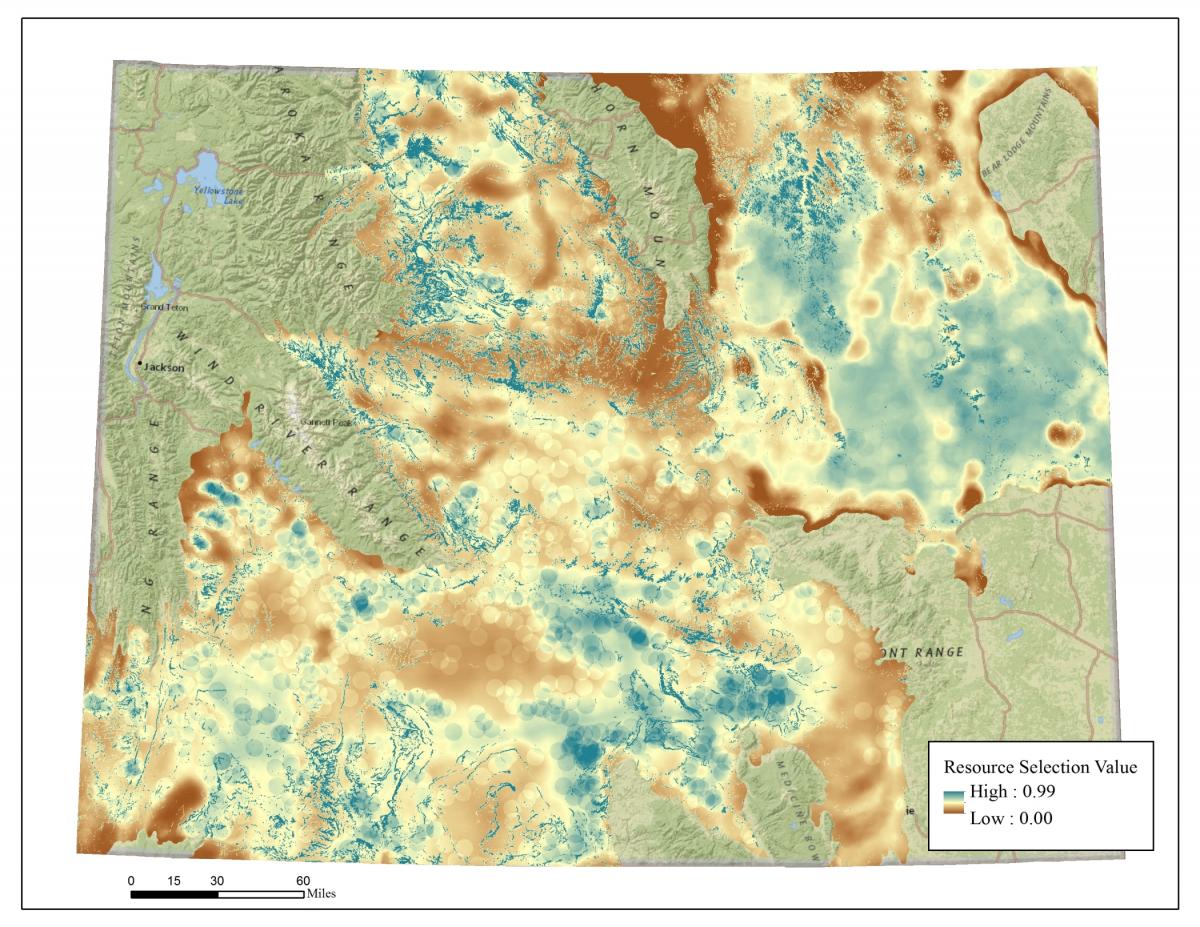Identifying critical landscapes for wildlife before human developments proceed is a critical step for proactive conservation necessary to maintain far-ranging populations. We used remotely sensed climate, land cover, and human impact data to identify habitat relationships conducive to golden eagle nesting sites across Wyoming. Mapping habitat quality for nesting golden eagles gives multiple stakeholders the science-based tools necessary to make complex management decisions. Using habitat maps and wind energy potential maps, a “SWOT” analysis (Strengths, Weakness, Opportunities, and Threats) was conducted to analyze the challenge of maintaining golden eagle habitat while supporting the development of renewable wind energy. The analysis highlighted “strengths” and “weaknesses” (high- and low-quality habitat) across the landscape, explicitly identifying “opportunities” for targeted conservation efforts (high-quality habitat, low energy potential), and “threats” (high-quality habitat, high energy potential). These analyses will help guide resource managers and the wind energy industry to plan for wind energy facilities, and identify high-value areas for eagle conservation.
 Relative habitat quality for nesting golden eagles across Wyoming.
Relative habitat quality for nesting golden eagles across Wyoming.

